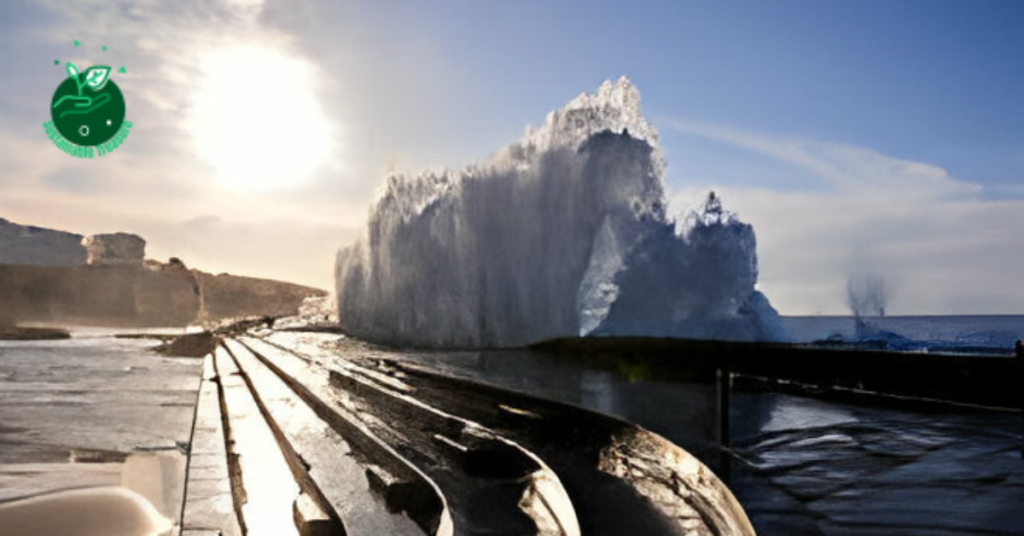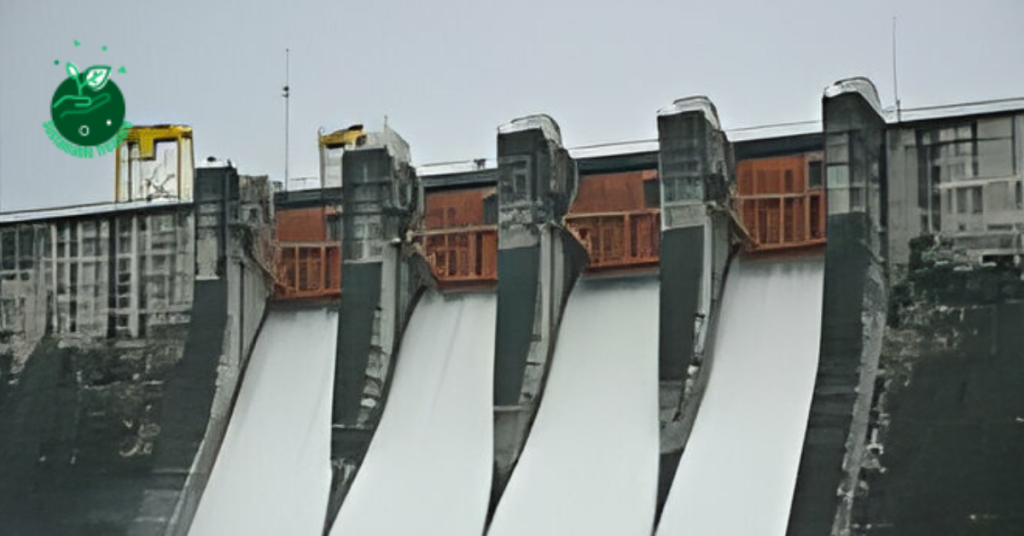Table of Contents
Do you wish to know the risks of hydropower investment? Yes, Hydropower projects have seen rising popularity in recent years as an renewable energy solution offering climate-friendly electricity generation at scale.
However, behind the climate-friendly façade lies a turbulent undercurrent of risks that need careful evaluation by investors and project developers.
Proactively assessing and managing risks is key to ensuring the long-term viability and sustainability of hydropower investments in the face of uncertainties.
This article offers a comprehensive framework for identifying, analyzing and mitigating the myriad financial, technical, social, environmental and political risks involved.
Let’s dive in.
Navigating The Risks Of Hydropower Investment: Turbulent Waters

Hydropower projects require high upfront capital investments over long developmental timelines before revenue generation starts. This poses significant funding and cashflow risks given the capital intensive nature of these projects.
High Upfront Capital Costs Create Funding Risks
Constructing hydropower plants and associated infrastructure like dams, tunnels, turbines etc. requires major capital outlays running into billions of dollars in many cases. The table below outlines typical capital cost breakdowns:
| Cost Component | Percentage of Total Capital Cost |
| Civil works (dams, tunnels etc.) | 50-70% |
| Electromechanical works (turbines, generators etc.) | 25-40% |
| Transmission infrastructure | 5-15% |
| Design, supervision and project management | 5-15% |
With such high costs, securing funding from investors, creditors and governments is both essential and challenging. Many projects run the risk of being financially unviable if unable to raise enough capital.
This funding risk increases further for private sector hydro developers taking on heavy debt burdens.
Forecasting Revenue Viability with Inconsistent Streamflows
Another key financial risk stems from uncertainty around future electricity generation, and resultant revenues, from hydropower plants. Generation is directly dependent on river streamflows feeding the reservoirs.
Climate change impacts and natural streamflow variability means annual generation can differ by 20-50% from initial forecasts. This revenue uncertainty makes it difficult to reliably assess project viability and service debt obligations. Robust hydrological data analysis and streamflow forecast modelling is essential to better account for this risk.
Modeling Project Economics for Unfavorable Electricity Tariffs
Finally, many hydropower investment risks arise from unfavorable electricity tariff regimes and off-take structures – especially in emerging economies. Issues like low wholesale tariffs, lack of escrow guarantees, payment delays from state utilities etc can severely erode project viability.
Detailed modeling of hydropower project economics under different tariff structures and sensitivity analysis is key to mitigating related financial risks for investors & developers. Government policies like guaranteed FIT contracts also play a major role in determining revenue certainty.
In summary, the financial risks around funding, revenue and tariffs/market structures need to be clearly understood and accounted for through the project development cycle. We next see how environment and social risk dimensions further complicate risk management for sustainable hydropower.
Mitigating the Aftershocks of Environmental & Social Risks
Apart from financial aspects, hydropower investments also carry significant environmental and social safeguard risks related to managing community, biodiversity and ecosystem impacts.
Safeguarding Ecosystems from Biodiversity and Habitat Loss
Building hydropower dams and associated infrastructure risks permanently altering river ecosystems – submerging forests & vegetation; blocking fish migration routes etc. These habitat loss and biodiversity impacts need careful attention through biodiversity action plans like:
- Relocating rare/endangered species from submergence zones
- Maintaining fish passes/ladders to support migration
- Offsetting habitat loss by creating protected conservation zones
Such interventions help account for ecosystem damages. But uncertainties remain around quantifying complex habitat linkages over long timeframes. Regular ecological monitoring provides risk mitigation by tracking on-the-ground biodiversity indicators.
Managing Community Impacts from Displacement and Resettlement
Constructing the dams/reservoirs themselves often involves displacing communities living in those areas – running into lakhs of project affected people in some cases. Managing resettlement and rehabilitation responsibly poses ethical, legal and financial risks.
Key aspects that need managing include:
- Fair compensation for displaced families
- Recreating sustainable livelihoods after relocation
- Avoiding cultural alienation from tribal groups’ native lands
- Providing adequate civic amenities in resettlement zones
Robust social impact management plans outlining timebound targets on R&R components are vital. Participative decision-making also empowers project-affected communities themselves to account for resettlement risks upfront.
Ensuring Adequate Planning for Downstream Flows
On the flip side, altering natural streamflows by damming rivers also impacts downstream habitats and dependent communities. Maintaining adequate ‘environmental flows’ is essential to account for:
- Water security of downstream farmers/villages
- Sustaining aquatic ecosystems throughout river basin
- Mitigating risks like embankment erosion, saltwater ingress etc.
But defining optimal environmental flow regimes is tricky – balancing electricity generation goals with ecological and community water needs. Adaptive flow management policies offer a mitigation mechanism by dynamically regulating releases based on monitoring feedbacks.
In summary, the environmental and social risks around managing ecosystem impacts, community displacement and downstream effects requires nuanced planning with risk buffers for long-term hydropower sustainability.
Accounting for Shifting Political and Regulatory Currents
Hydropower investments also face typical emerging market risks around navigating complex policy and permitting landscapes shaped by political economy factors.
Adapting to Unpredictable Changes in Government Policies
Return expectations for hydropower projects spanning multiple decades depends considerably on stability of government policies like electricity tariffs, tax rates, licensing terms etc. Unfortunately, these policy regimes often see unpredictable shifts linked to changing political scenario.
For instance, volatility in renewables purchase obligations, feed-in-tariffs or taxation policies across election cycles have derailed many power projects globally. Investors thus need to scenario test project viability across range of policy conditions rather than rely on status quo. Diversification across geographies acts as natural hedge against country-specific policy risks.
Securing Permits on Time amid Complex Approval Processes
Before construction can even begin, hydropower projects need navigating a maze of technical, environmental and social approvals from multiple agencies. These clearance processes are often bureaucratic, time-consuming and politically influenced.
Obtaining permits as planned is essential for avoiding expensive delays or cost overruns. Hence robust tracking mechanisms need to be instituted to proactively identify and resolve potential bottlenecks in getting timely approvals. Regulatory risks can be partly mitigated via public consultations and maintaining positive community relations.
Hedging for Sudden Tariff Structure Modifications
As highlighted earlier, volatility in electricity tariffs and dispatch policies remains a lingering concern dictating revenue stability for hydropower producers. Structural shifts like moving from feed-in-tariffs to competitive auctions can completely upend project economics.
Developers thus need to stress test investments across range of pricing scenarios – factoring in risks like removal of subsidies, reduced off-take guarantees etc. Diversification across multiple revenue stream including ancillary services further helps hedge against tariff structure changes.
Thus, the complex policy and permitting risks involved necessitates dynamic modeling, scenario analysis and robust government/community engagement by investors for ensuring hydropower viability amid constantly evolving regulatory circumstances.
Developing Integrated Risk Frameworks for Hydropower Projects
As seen above, hydropower investments face a myriad spectrum of financial, environmental, social, political and other technical risks flowing through the project lifecycle. No single tool can fully account for these complex risks interlinkages.
Instead, a portfolio of risk management instruments needs to be blended towards developing an integrated framework that helps reveal and mitigate risks of different natures.
Systematic Identification and Analysis of Relevant Risk Factors
The first step lies in methodically identifying all plausible risk factors – across financial, technical, operational, climate, political etc domains – that can undermine objectives like investment returns or project sustainability.
Common risk identification techniques involve:
- Benchmarking historical risks in comparable projects
- Interviewing expert stakeholder groups to surface risks
- Referring published risk classifications for hydropower
- Leveraging project-specific environmental & social impact assessments
Once key risks are identified, detailed quantification and probability analysis offers visibility into how vulnerabilities might propagate. Sensitivity analysis further reveals which risk factors carry maximum impact.
Optimal Allocation of Risks to Different Stakeholders
Proactive risk allocation & sharing across the developer, investors, insurers, contractors, utilities etc. ensures risks are owned by parties best equipped to manage them. For instance, geological risks are better absorbed by engineering contractors while revenue risks can be shared with off-takers.
Effective allocation relies on aligning risk responsibility with control through mechanisms like:
- Performance guarantees and warranties
- Fixed price construction contracts
- Insurance on natural disasters, project delays
- Long term power purchase agreements
Ongoing Strategies to Monitor and Mitigate Key Risks
Finally, integrating continuous risk monitoring mechanisms provides dynamic oversight on emerging vulnerabilities. Real-time indicators tracking financial, operational and ESG metrics reveal where mitigation interventions may be needed.
Common tactics include instituting:
- Robust hydrological monitoring systems measuring water flows
- Independent compliance audits on ESG parameters
- Early warning systems modeling revenue changes
- Performance buffers to account for uncertainties
Regularly updating the enterprise risk register also maintains live visibility as a tool for proactive mitigation.
Blending structured frameworks for identification, analysis, allocation and monitoring of risks thus enables navigating the chronic uncertainties involved in hydropower investments.
Key Takeaways on Managing Hydropower Investment Risks
Hydropower projects offer major climate benefits but also carry significant financial, social, environmental, and political risks that can impair sustainability or investment returns if not managed prudently. Key insights for investors and developers include:
- Thoroughly evaluating project viability under different cost, revenue and policy scenarios gives better visibility on potential vulnerabilities
- Allocating risks explicitly upfront to parties best able to control them reduces overall uncertainties
- Monitoring mechanisms like performance buffers, biophysical indicators and early warning systems help reveal risks proactively
- Maintaining positive community and government relationships builds support to combat external uncertainties
- Developing integrated risk frameworks blends identification, analysis, allocation and monitoring tools for keeping risks navigable even amidst unpredictability
Proactively grappling with the chronic risks involved provides a realistic basis for securing viability and sustainability of hydropower investments against the tide of uncertainties. The long-term climate dividends from responsibly harnessing hydropower makes the effort well worth it.
FAQs

What Are 5 Disadvantages Of Hydropower?
Hydropower offers many benefits as a renewable electricity source, but also has some notable drawbacks. Five key disadvantages of hydropower projects include:
- Habitat Destruction: Building dams disrupts the natural water flows and structure of river systems, damaging habitats of fish and other wildlife. This threatens biodiversity and ecosystems.
- Community Displacement: Some hydropower projects submerge inhabited areas under new reservoirs and lead to forced displacement of communities. This causes grave social impact and livelihood loss.
- Methane Emissions: Underwater decay of flooded vegetation in reservoirs emits methane, a potent greenhouse gas. Reservoirs can have higher carbon footprints than expected.
- Expense of Building Infrastructure: Huge expenditure is needed to build dams, spillways, tunnels and turbines. Hydropower has one of the costliest upfront capital investments among electricity sources.
- Reduced River Flows: Damming rivers reduces their downstream water flows and natural sediment transport. This impacts water-dependent livelihoods like farming and fishing downstream.
What Are The Risk Factors Of Hydro?
Key risk factors inherent to the life cycle of hydropower projects include:
- Hydrological risks from shifting precipitation patterns, extreme flows and floods
- Geological risks like landslides, cavities or seismic disturbances
- Financial risks like cost overruns, tariff changes, revenue variability
- Regulatory risks from volatile policies and shift in clearances
- Social opposition risks due to rehabilitation concerns
- Technical risks around electro-mechanical systems reliability
- Environmental risks related to habitat disruption, erosion etc.
Robust risk modelling and mitigation planning for each factor is vital for sustainable hydropower investments.
What Are The Risks Of Water Energy?
Water energy like hydropower carries the following unique risks:
- Hydrological risks of droughts or floods affecting electricity output
- Infrastructure risks of water-induced erosion, cavities damaging assets
- Risk of competing water uses for irrigation and drinking needs
- Biodiversity risks from disruption of aquatic and riparian ecosystems
- Resettlement risks from displacing communities for reservoirs
- Financial risks from seasonal variability in renewable generation
Water-energy projects thus need to account for multi-dimensional uncertainties through data-driven planning of design buffers, contingencies funds and adaptive policies.
Which Of The Following Are Factors In Generating Hydropower?
The key factors governing electricity generation from hydropower resources are:
- The volume of river flows feeding into the reservoirs
- The effective height of water falls/reservoir levels
- The capacity and efficiency of turbines and generators
- Headrace tunnel capacity and transmission infrastructure
- The overall lifetime and capacity factor of installations
Together, these technical and hydrological factors determine the quantum of firm, peaking or seasonal electricity that can be reliably harnessed and absorbed into regional grids.
How Much Does Hydropower Cost?
As per industry benchmarks, hydropower projects incur capital costs in the range of $2 – $8 million per installed megawatt on average globally. Mid-range costs are usually $3 – $5 million per MW. But this varies based on:
- Topographical conditions needing civil structures like dams, tunnels
- Electromechanical and transmission infrastructure
- Scale of installations and cost-sharing mechanisms
- Financial costs like interest rates on development capital etc.
Larger projects above 500 MW capacity usually benefit from economies of scale. Overall lifetime costs remain competitive vis-à-vis thermal generation.
What Are The Advantages And Disadvantages Of Hydropower?
Advantages:
- Renewable low-carbon electricity generation
- Reliable baseload power potential
- Long life spans of ~50 years for assets
- Flood control and storage benefits
- Job creation and economic development catalyst
Disadvantages:
- High upfront infrastructure costs
- Disrupts aquatic ecosystems and habitats
- Risks like reservoirs triggering earthquakes
- Reduces seasonal downstream river flows
- Community rehabilitation challenges
What Is A Disadvantage Of Large Scale Hydropower?
A key disadvantage that gets amplified in large-scale hydropower projects compared to smaller hydro installations is that:
The expansive reservoirs and higher dams require submerging much bigger land areas upstream, leading to displacement of local communities and submergence of larger forest/vegetation zones.
Mitigating these disproportionate human and ecological impacts downstream poses complex sustainability challenges for large hydropower dam operators and investors, requiring strategic rehabilitation programs.
Why Should I Invest In Hydropower?
Some compelling reasons to invest in hydropower projects, despite certain risks involved, include:
- Long term electricity sales contracts provide stable investor returns
- Increasing policy support globally for renewable energy sources
- Low operating costs and minimal fuel requirements over asset lifetimes
- Rising energy demands making hydropower capacity expansion attractive
- Major climate change mitigation potential as low-carbon electricity
With careful contextual viability analysis and risk modeling, hydropower investments offer robust risk-adjusted returns.
Conclusion
To conclude, hydropower offers major climate dividends but needs calibrated investment approaches weighing ecological and social equity.
The framework requires factoring long-term environmental variability into planning, distributing risks explicitly rather than eventually to vulnerable communities, binding today’s choices to sustainability guardrails for posterity, and participative adaptive management balancing diverse stakeholder needs.
With conscientious development, hydropower can sustainably power economies while securing shared prosperity.

